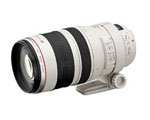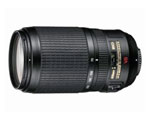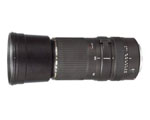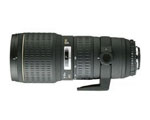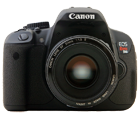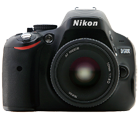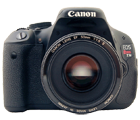The Best Wildlife Lens |
Page updated: July 2007 |
When seeking out the best wildlife lens for your digital SLR, you're really looking for two features: a very long focal length and image stabilization.
Before I tackle these two features, let's talk about the definition of wildlife (to make sure that yours is the same as mine!).
First, the subject of a wildlife photo is an animal - unless, of course, your close personal acquaintances are REALLY out of control.
Second, there are two categories of wildlife: small animals that you may be able to get close to (birds, rodents, etc.) and large animals that you want to give plenty of space (lions, tigers and bears).
Regardless of the type of subject, you want the end result to be the same: a nice big close-up photo.
Wildlife photos taken with landscape and portrait lenses don't turn out very well - the main subject of the image winds up dominated by the surrounding landscape.
In order to push the landscape into the background and make your animal subject stand out, you need an extreme telephoto lens.
Extreme Telephoto = Long Focal Length
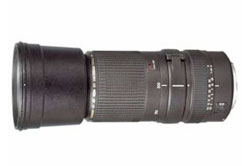
As lens focal length increases, you can get farther and farther away from your subject while still capturing a close-up photo.
For example, let's say that you have a 50mm lens and that the distance in between the camera and subject is 5 feet.
If you switch to a 600mm lens, you can walk a half block away (depending on the length of the block, of course) and still capture the same shot that you just took with the 50mm.
Lenses with extremely long focal lengths (400mm and higher) are also called extreme telephoto.
The whole point of a lens like this is that you don't have to be right on top of your subject to get a close-up photo.
This is particularily helpful when you're dealing with skittish birds and animals that might mistake you for an afternoon snack.
Image Stabilization
While an extreme telephoto lens can help you zoom in even if you're standing far away from your subjects, it comes with one drawback.
Extreme telephoto lenses magnify camera shake and generate a higher number of blurry photos.
The general rule of thumb for pictures that don't look fuzzy is that you should use a shutter speed that is faster than 1/[focal length of the lens] when holding the camera in your hands (this does not apply when your camera is on a tripod).
This means that if you're using a 50mm lens, you can get clear hand-held shots with a shutter speed of 1/60th of a second.
But if you increase the focal length of your lens to 400mm, you must also increase the shutter speed to 1/500th of a second to ensure a clear photo.
Depending on the amount of available light, you may not be able to use a fast shutter speed like 1/500.
This is where image stabilized lenses come in. A lens with an IS system reduces the effect of hand-held camera shake and helps you get clearer photos.
Only Canon and Nikon make lenses with image stabilization. Many other camera manufacturers have image stabilization built into the camera body, which works with every lens you attach.
Canon's image stabilized lenses have an IS designation (for Image Stabilization) while Nikon's are indicated with a VR (Vibration Reduction).
While image stabilization is very nice to have on an extreme telephoto, it's not a requirement for two reasons: IS is less effective when you're using the camera to track a moving subject (gazelles, anyone?) and it's of no use at all if you intend to use a tripod - the best form of image stabilization you can get.
Price and Weight
Before I present my picks for the best wildlife lenses, please brace yourself: these lenses are EXPENSIVE.
The greater the focal length of the lens, the more glass the manufacturer must use in its construction.
This has two consequences: it makes extreme telephoto lenses exceptionally large and heavy, and all of them are going to set you back a pretty penny.
And please don't buy bargain basement. Telephoto lenses that cost less than $500 do not have superior optics, and will make EVERY photo you take with your lens appear as if it's out of focus.
If wildlife photography is your passion, then it's worth it to invest in a lens that's going to help you take crisp, clear, beautiful photos.
The Best Wildlife Lenses
CANON: EF 100-400mm f/4.5-5.6L IS USM
NIKON: 70-300mm f/4.5-5.6G ED-IF AF-S VR
SONY: Tamron SP AF 200-500mm f/5-6.3 Di LD (IF)
PENTAX: Sigma 100-300mm f/4 EX DG IF HSM APO
OLYMPUS: Zuiko 50-200mm f/2.8-3.5 E-ED
 |
Cost: $825
Filter Size: 67mm
Size: 6.2 x 3.4in (157 x 87mm)
Weight: 38.4oz (1,070g)
|
|
| While I was originally going to recommend the Sigma 50-500mm lens, it turns out that it's out of stock for the Olympus mount. Since this is the case, the most affordable wildlife lens for the Olympus digital SLR cameras is this one. While it doesn't have the same zoom range as some of the other lenses on this page, it makes up for that with a much wider maximum aperture. If you'd like to get more on the telephoto end, you can pair this lens with the Olympus 1.4x teleconverter ($385), which will increase the telephoto setting to almost 300mm. | ||
| Digital SLR Home |
